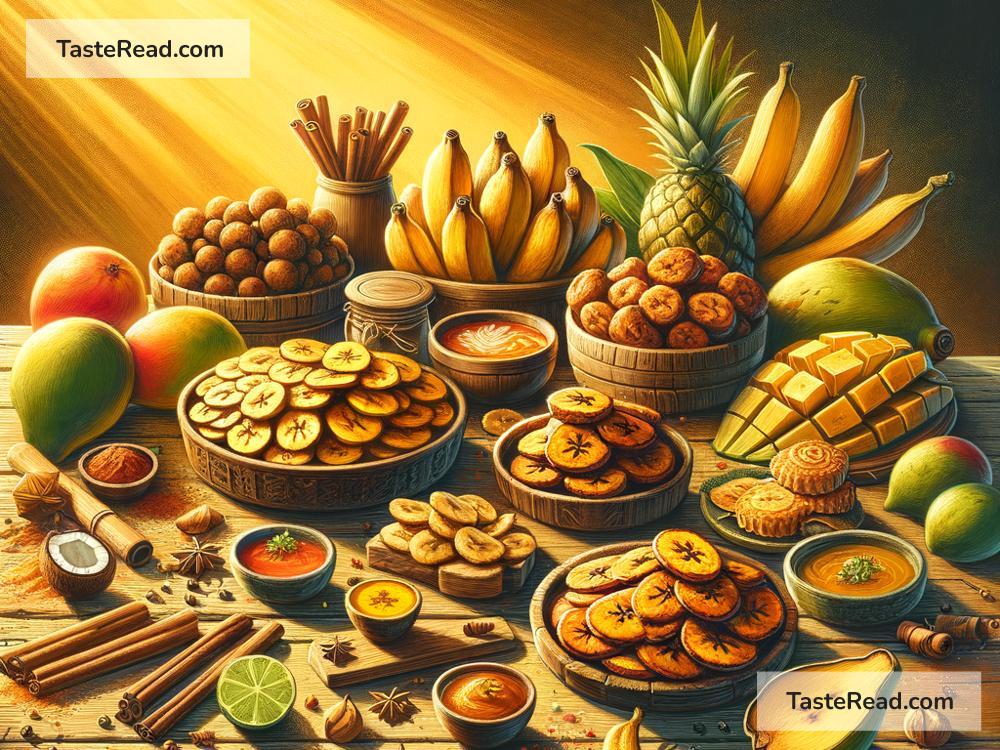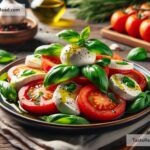The Fascinating Role of Plantains in Caribbean Cuisine
Plantains are an essential part of Caribbean cuisine and one of the region’s most beloved ingredients. Whether they’re boiled, fried, baked, or mashed, plantains are enjoyed in countless ways across the islands. Their versatility, rich flavor, and cultural significance make them a fascinating fruit that holds a special place in Caribbean culinary traditions.
What Are Plantains?
Plantains may look like bananas, but they’re not the same. While bananas are sweet and usually eaten raw, plantains are starchy and need to be cooked before eating. They are larger and thicker than bananas, and their taste changes as they ripen. Green plantains (unripe ones) are firm and have a mild, earthy flavor, while yellow or black plantains (ripe ones) are softer and sweeter.
Plantains are often called a “superfood” because of their nutritional benefits. They’re packed with vitamins, minerals, and fiber, making them a healthy and satisfying addition to meals.
How Did Plantains Become Popular in the Caribbean?
Plantains are native to Southeast Asia, but they made their way to the Caribbean hundreds of years ago. During the transatlantic trade, plantains were introduced to the islands by African and European travelers. Over time, they became a staple food in the region, as they thrived in the tropical climate and provided a reliable source of nutrition.
In the Caribbean, plantains are considered a symbol of resilience and creativity. Generations have used plantains to create hearty meals during tough times, and today, they remain a treasured ingredient in everyday cooking and celebrations.
The Versatility of Plantains in Caribbean Cuisine
One of the reasons plantains are so popular is their versatility. They can be used in both savory and sweet dishes, depending on how ripe they are and how they’re cooked. Here are some of the most common ways plantains are prepared in Caribbean kitchens:
1. Fried Plantains (Tostones and Maduros)
Fried plantains are a favorite snack or side dish across the Caribbean. Green plantains are often sliced, flattened, and fried twice to make crispy tostones, which are usually served with a sprinkle of salt or dipped in garlic sauce. On the other hand, ripe plantains are simply sliced and fried to make sweet, caramelized maduros.
2. Boiled Plantains
Boiled plantains are a simple and nutritious way to enjoy this fruit. Green plantains are peeled, cooked in water, and served as a hearty side dish, often alongside fish, stews, or other proteins. Boiled plantains are also popular for breakfast, paired with eggs or butter.
3. Plantain Chips
Crunchy plantain chips are a popular snack throughout the islands. Thinly sliced plantains are fried until crispy and seasoned with salt or spices. They’re perfect for munching on the go and are often sold as street food.
4. Plantain Mash
Green plantains are sometimes boiled and mashed to create a dish called mofongo, which is especially popular in Puerto Rico and the Dominican Republic. Mofongo is typically seasoned with garlic and mixed with pork cracklings or shrimp before being shaped into a dome. It’s a comforting and flavorful dish that showcases the creativity of Caribbean cooking.
5. Plantain Desserts
Ripe plantains are naturally sweet, so they are often used in desserts. In Jamaica, plantains are baked into puddings or pies. In other islands, they are caramelized with sugar and spices to create a decadent treat. Plantains can also be folded into batter to make fritters, adding a tropical twist to traditional pastries.
The Cultural Importance of Plantains
Plantains are much more than just food—they carry cultural and emotional significance for many people in the Caribbean. They represent heritage, resourcefulness, and connection to the land. Traditional plantain dishes are often passed down through families, linking generations and preserving the rich culinary history of the islands.
As an affordable and filling ingredient, plantains have played an important role in helping communities thrive. During times of economic hardship, plantains have been a reliable food source, providing nourishment and comfort to families across the region. This resilience is celebrated in Caribbean culture and serves as a reminder of the strength and ingenuity of the people.
Plantains in Caribbean Festivals and Gatherings
No Caribbean celebration is complete without plantains on the menu. Whether it’s a birthday party, wedding, or holiday feast, you’re sure to find plantain dishes alongside other island favorites like rice and peas, jerk chicken, or curry goat. Plantains bring a sense of joy and togetherness to the table, connecting people through shared flavors and traditions.
At Caribbean festivals, street vendors often sell plantain-based snacks like chips, fritters, or tostones. These treats are enjoyed by locals and tourists alike, offering a taste of the vibrant culture and culinary creativity of the islands.
Conclusion
Plantains are truly fascinating and play a remarkable role in Caribbean cuisine. Their adaptability and delicious flavor make them a cherished ingredient that reflects the resourcefulness and spirit of the people who call the islands home. Whether you’re frying them, boiling them, or baking them, plantains are always a celebration of culture, history, and flavor.
So, the next time you enjoy a plate of fried plantains or a warm plantain pudding, take a moment to appreciate this humble fruit and its special place in Caribbean life. It’s not just food—it’s a story of resilience, tradition, and community that continues to bring people together across the islands and beyond.


